If you spend time outside, you have likely heard about poison hemlock (Conium maculatum). This highly toxic plant poses a significant danger, so understanding how to identify it is vital. However, some other plants look similar to poison hemlock at first glance. Knowing what to look for will help keep you and your pets safe. It is a biennial plant that grows relatively low to the ground the first year but shoots up to 10 feet high the second year. When young, its fern-like foliage resembles carrots, which makes sense as it belongs to the Apiaceae (carrot) family. The stalk is hollow and smooth, with no hairs. It also has purple or red dots and streaks. Its bright green leaves are lacy, divided, and have toothed edges. They also smell musty when disturbed or crushed. The tiny flowers collect in rounded clusters. Now that you know what to look for, let’s explore 10 plants that look like poison hemlock and how to identify them.
Angelica

Angelica plants have several differences, including their foliage.
©TippyTortue/Shutterstock.com
Not all poison hemlock lookalikes are poisonous. Some, like angelica (Angelica atropurpurea), have important and helpful purposes. Angelica is a medicinal herb that has played a vital role in several traditional healing systems. It is an herbaceous perennial that reaches the same height (10 feet) and develops white or greenish-white flowers. Unlike poison hemlock, angelica can grow in partially shaded areas. It has purple stems that are usually uniform in color but can have some spots. However, its leaves are not fern-like or lacy and are significantly larger. The most notable and obvious distinction is the lovely scent angelica flowers emit.
Common Elderberry
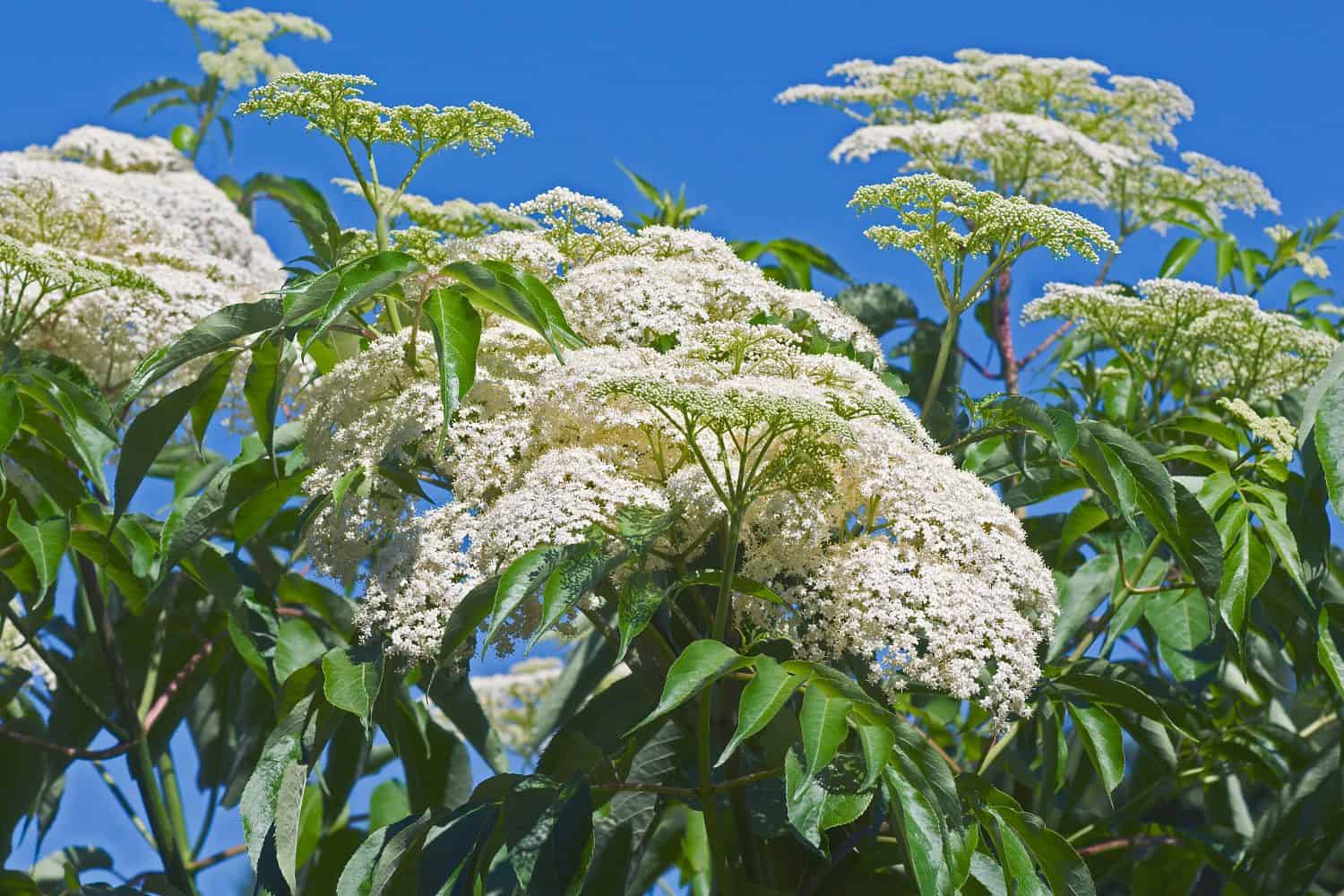
While elderflowers are white, they don’t grow in the same cluster shape that poison hemlock flowers do.
©Nikolay Kurzenko/Shutterstock.com
It is not common elderberry (Sambucus canadensis) plants themselves that can cause misidentification. But the elderflowers, which arrive before the berries, can often trip people up. So, a few key things to keep in mind are that elderflowers do not develop in an umbel shape and are significantly larger. The plant is significantly different since it is a shrub or tree that belongs to the Adoxaceae (muskroot) family.
Cow parsnip
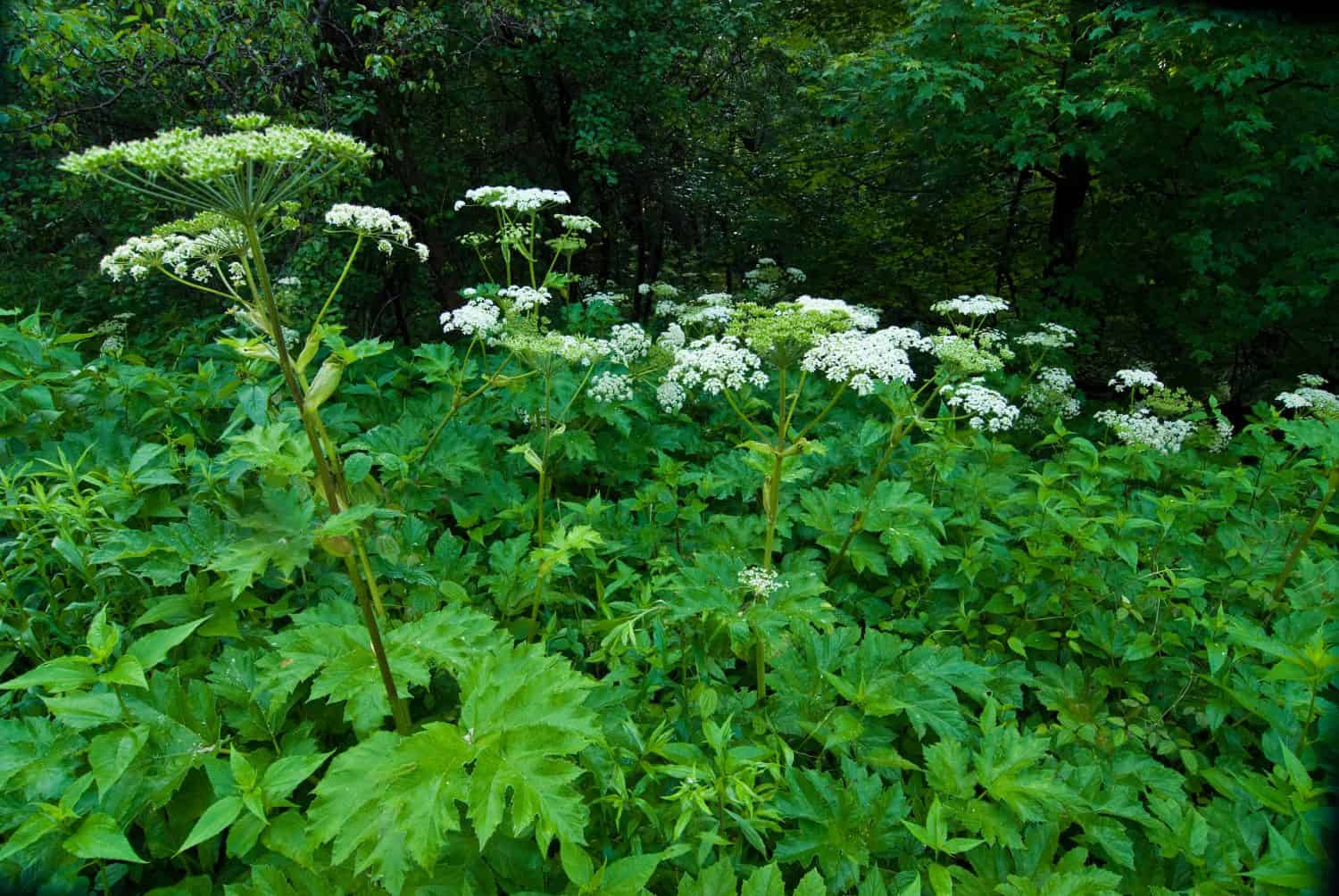
Cow parsnip looks similar to two toxic plants and should be avoided unless positive identification can be made.
©Gerry Bishop/Shutterstock.com
Another member of the Apiaceae family is cow parsnip (Heracleum maximum). This North American native plant also looks strikingly similar to water hemlock, which is also toxic. Since cow parsnip looks so much like two highly poisonous plants, it should be avoided unless you can absolutely be certain about your identification. The only difference between poison hemlock and cow parsnip is the latter has larger flowers and leaves.
Giant Hogweed
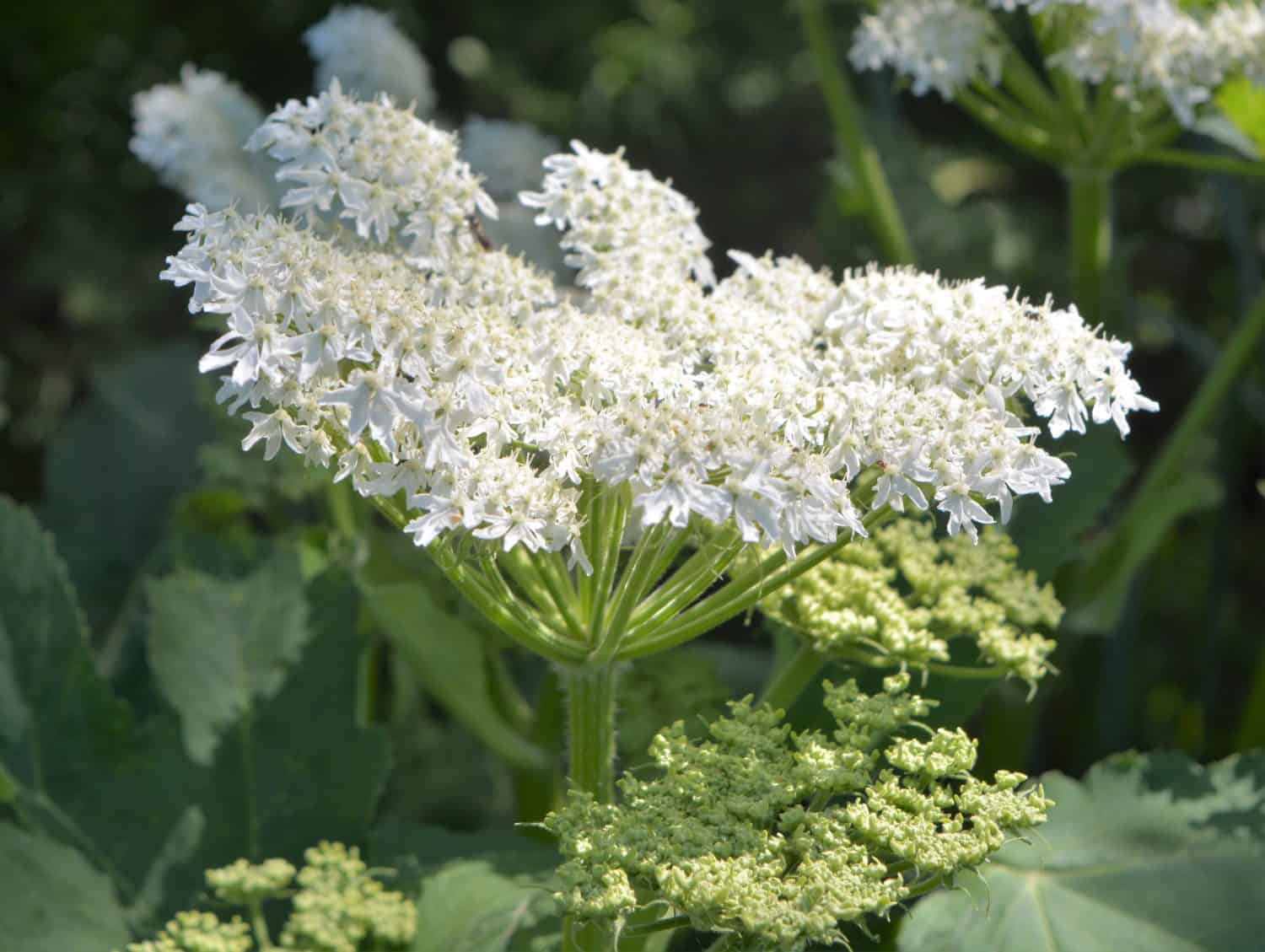
Giant hogweed looks strikingly similar to poison hemlock. However, it should also be avoided since this particular plant is also poisonous to people.
©akslocum/Shutterstock.com
The highly toxic giant hogweed (Heracleum mantegazzianum) plant belongs to the Apiaceae family. While its flowers look similar to those on poison hemlock, and it has purple spots on the stems, there are enough differences to tell the two apart. First, the giant hogweed can grow to around eighteen feet tall, so it is much larger than poison hemlock. And everything is much larger about this plant. The flowers can reach up to two and a half feet in diameter. Additionally, its large leaves grow up to five feet wide and are not lacy. However, that doesn’t mean giant hogweed is safe. It can easily cause skin burns, blisters, and blindness when touched.
Queen Anne’s Lace

The Queen Anne’s Lace flowers look very similar to those on the poison hemlock plant. Thankfully, there are enough differences to tell the two apart.
©Lake Erie Gal/Shutterstock.com
Another medicinal herb that often gets mistaken for poison hemlock is Queen Anne’s Lace (Daucus carota), which is also in the Apiaceae (carrot) family. Thankfully, several unique distinctions set this helpful herb apart. First and foremost is its stem and leaves. They are both hairy, in stark contrast to those of poison hemlock. This particular plant is also significantly shorter, reaching only three feet tall at maturity. Additionally, you can spot differences in the flowers upon close observation. The blossoms are flatter, bloom later in the year, and usually have a single darkly colored flower in the mix.
Water Hemlock
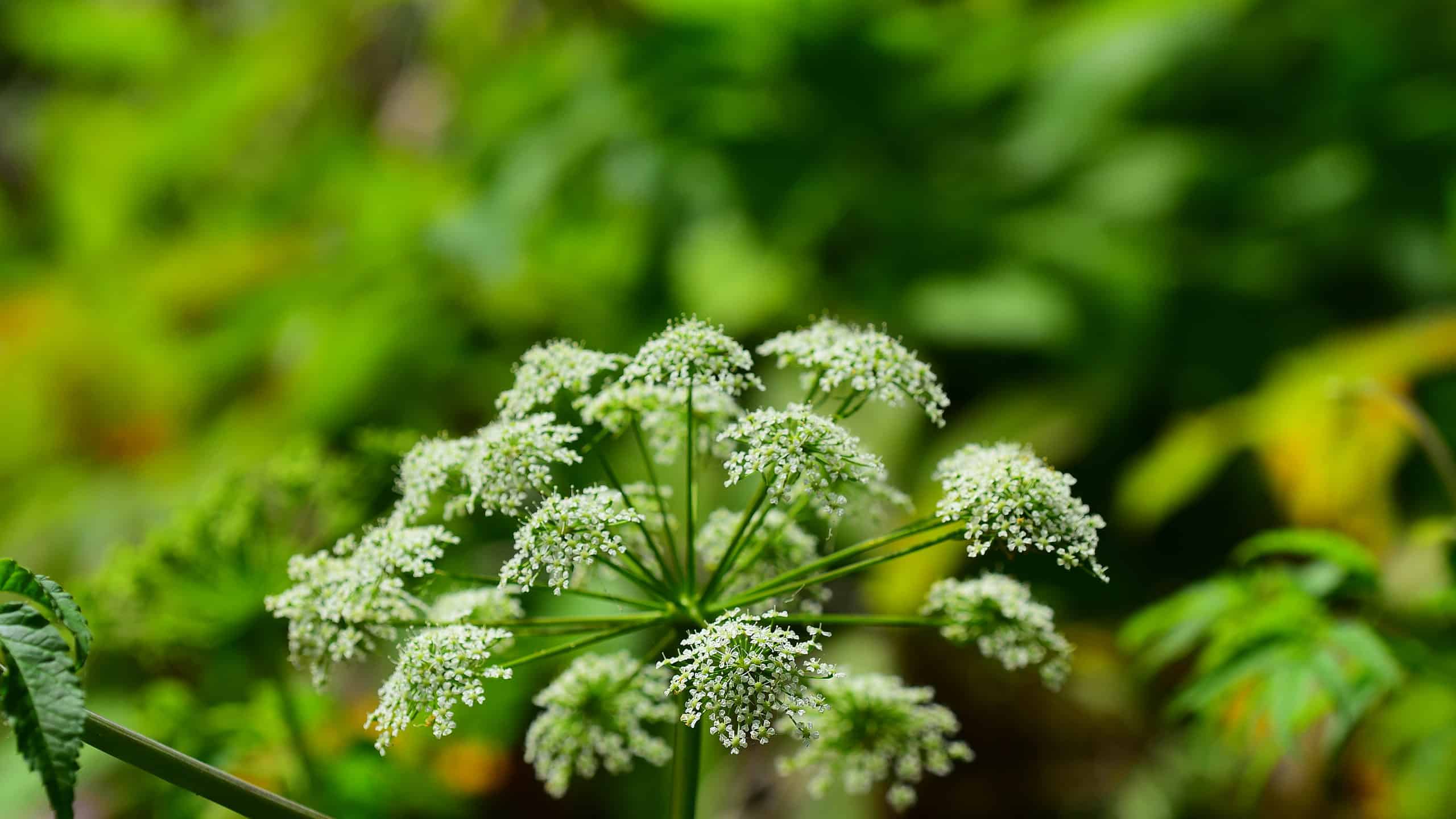
Water hemlock is highly toxic to people and animals.
©iStock.com/cturtletrax
Another toxic look-alike is water hemlock (Cicuta spp.), which belongs to the Apiaceae family. This deadly plant has an even higher level of toxicity than poison hemlock. There are four different species, and all are equally dangerous for humans and animals. Their effects will hit in as little as 60 minutes after ingestion. One species, C. maculata, also has a smooth hollow stem with purple stripes. It grows almost as tall (eight feet) and develops round clusters of tiny white flowers. The leaves of water hemlock have distinctive veins that terminate between the individual teeth.
Wild Chervil
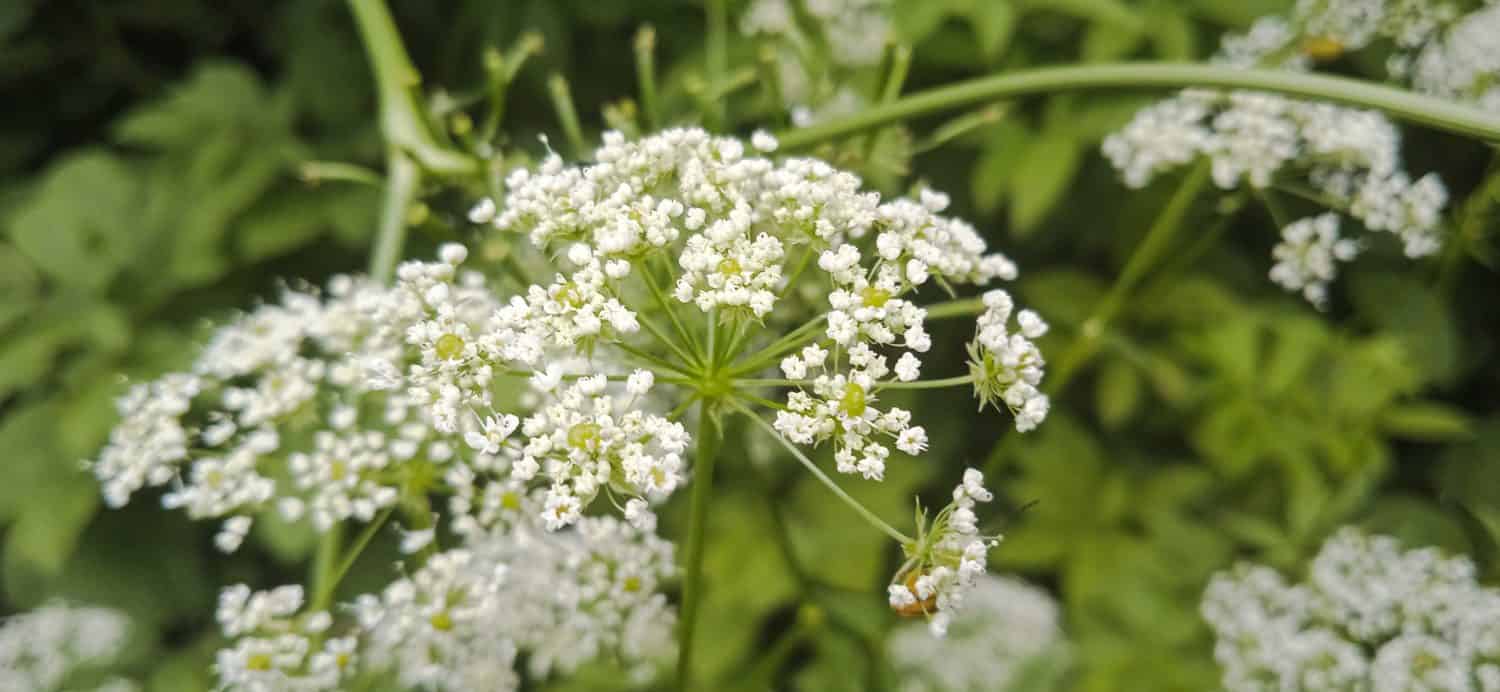
Even though wild chervil is edible, it is best to leave the plant alone. It closely resembles two poisonous plants and misidentication can be fatal.
©Olena Guzenko/Shutterstock.com
Wild chervil, or cow parsley, (Anthriscus sylvestris), belongs to the Umbellifers family. It grows umbels of small white flowers, much like poison hemlock. However, its leaves are divided and alternate. The flowers and the leaves are significantly larger than poison hemlock, which sets this plant apart. But that’s not the only concern. Cow parsley more closely resembles fool’s parsley (Aethusa cynapium), another poisonous plant. It is slightly less poisonous than poison hemlock, but it will still leave you feeling miserable. Some people enjoy the edible leaves of wild chervil. However, avoid harvesting this plant unless you are 100% certain of its identification.
Wild Fennel
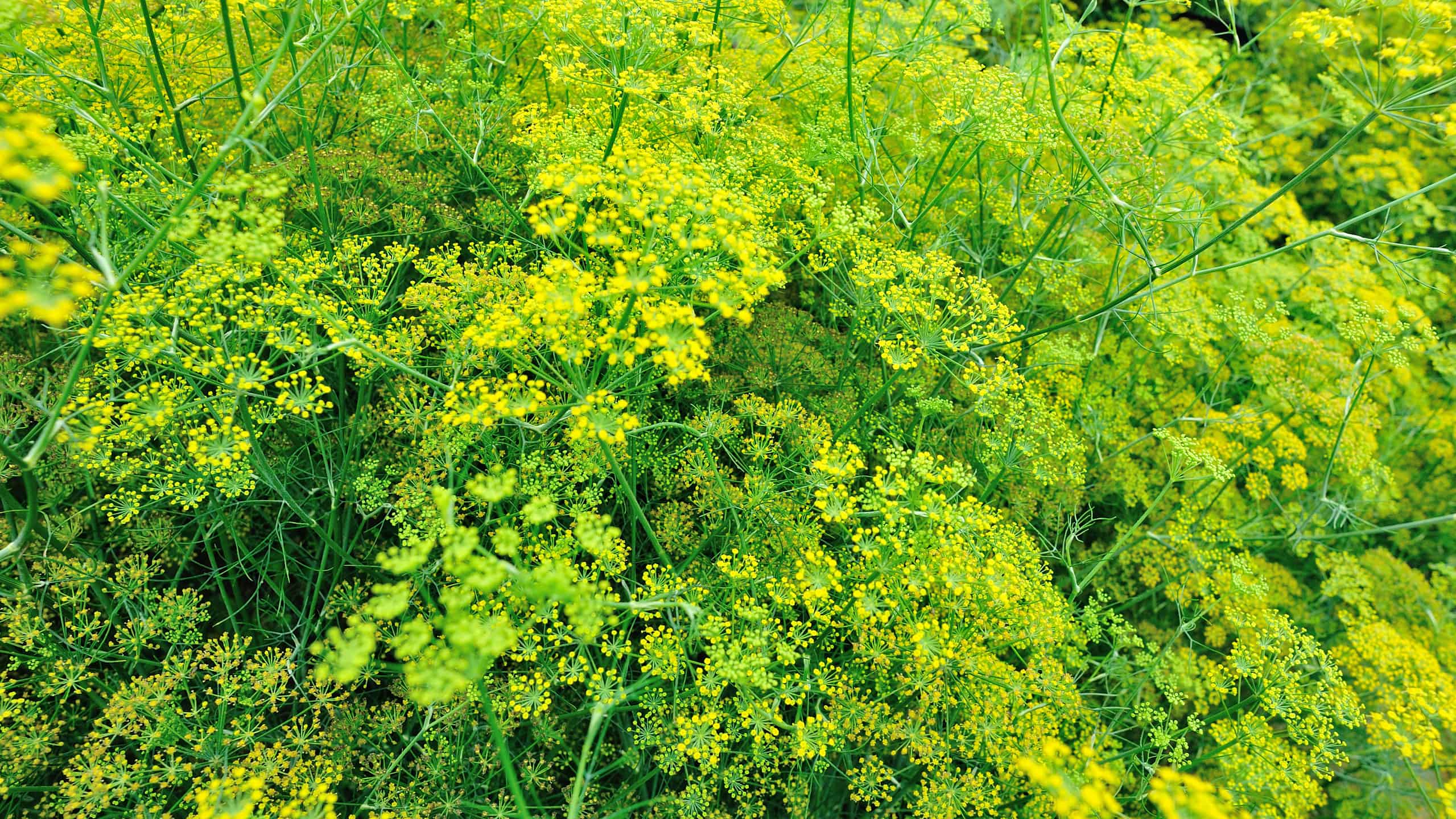
While wild fennel looks a lot like poison hemlock structurally, the two have markedly different appearances.
©lzf/Shutterstock.com
Wild fennel (Foeniculum vulgare) is also a member of the Apiaceae family. It is native to the Mediterranean region but is also commonly found in other parts of the world. On the surface, it looks very similar to poison hemlock. The two plants have similar structures and appearances. Thankfully, there are a few notable differences that can help you tell them apart. First is the size. While poison hemlock often reaches ten feet tall, wild fennel doesn’t grow as high. It tops out at around six feet at maturity. Another notable difference is that wild fennel develops yellow blossoms rather than white. This plant also has a licorice-like scent and foliage similar to what you find on dill plants.
Wild Parsnip
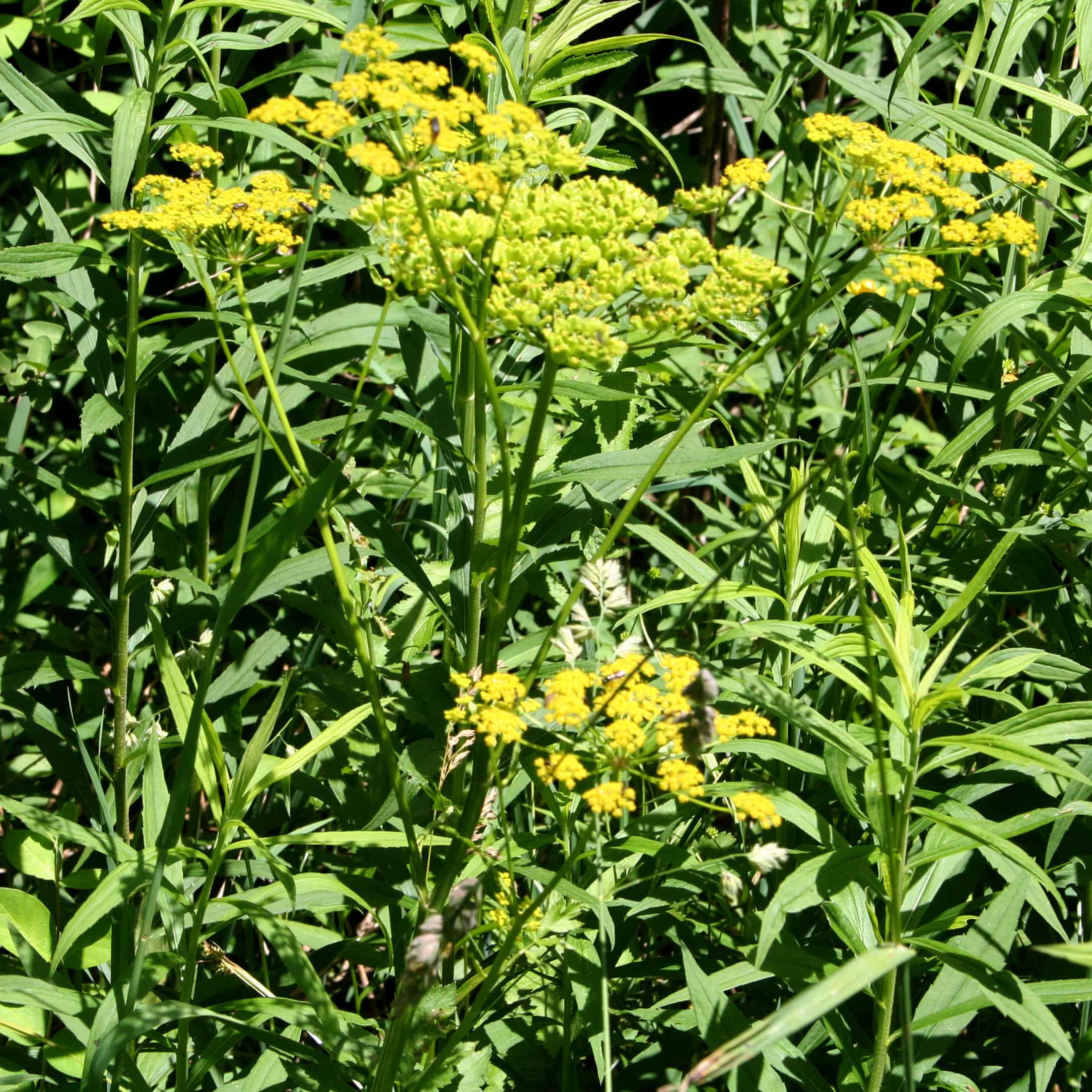
The easiest way to distinguish between poison hemlock and wild parsnip is via its yellow flowers.
©R. A. Nonenmacher / CC BY-SA 4.0 - License
While wild parsnip (Pastinaca sativa) often gets mistaken for poison hemlock, it has a handful of distinguishing characteristics that set it apart. If you can learn to identify it properly, this member of the Apiaceae family can prove highly beneficial. It has edible roots, but getting to them is a challenge since the foliage and stems can burn the skin. Those stems also have grooves, which sets them apart from poison hemlock. Additionally, the flowers of this fascinating plant are yellow rather than white.
Yarrow

While yarrow’s flowers are white, they don’t grow in the same shape as poison hemlock flowers.
©SakSa/Shutterstock.com
Yarrow (Achillea millefolium) belongs to the Asteraceae (daisy) family but has enough similarities to poison hemlock that it is easy to mistake the two. One of the most notable similarities is its lovely white flowers. However, yarrow flowers don’t develop in the same umbel. And while the foliage looks slightly similar, yarrow’s leaves are rather frilly and not triangular. The most striking distinction is that yarrow only reaches two to three feet tall at maturity. Understanding the difference between the two is important since you don’t want to miss out on the medicinal benefits of yarrow!
The photo featured at the top of this post is © iStock.com/gabrielabertolini
Thank you for reading! Have some feedback for us? Contact the AZ Animals editorial team.






